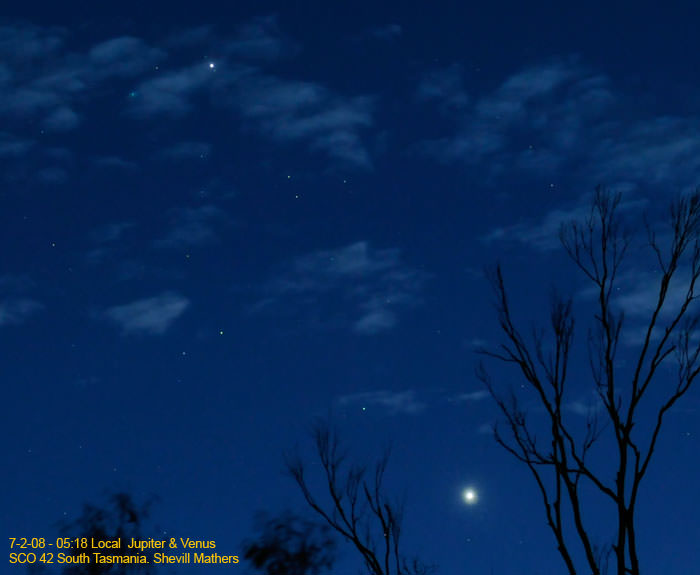[/caption]
Venus and Jupiter are two different planets that play a very prominent role in the night sky. Venus is the brightest planet in sky, sometimes appearing so bright that it can actually cast shadows on the ground. But it’s only visible shortly after sunset or before sunrise. Jupiter is usually the second brightest planet that we can see in the sky, and unlike Venus, it’s often visible all night. If you’re seeing a really bright star in the middle of the night, that’s probably Jupiter.
Let’s compare and contrast the two planets.
In terms of size, Venus and Jupiter are very different. The diameter of Venus is only 12,103 km, while the diameter of Jupiter is 142,984 km. And so when you compare the two planets, Jupiter is 11.8 times bigger than Venus. You could fit almost 1400 planets the size of Venus inside Jupiter.
Venus is the second closest planet to orbit the Sun. It orbits at an average distance of 108 million km, and takes 224.7 days to complete one orbit around the Sun. Jupiter, on the other hand orbits at an average distance of 779 million km and takes 11.85 years to orbit the Sun. Strangely, a day on Venus lasts 243 days, which is actually longer than a year on Venus; furthermore, it’s rotating backwards from the rest of the planets in the Solar System. A day on Jupiter lasts just 9.9 hours. Such a rapid rotation causes Jupiter to flatten out, bulging at its equator.
Venus is a terrestrial planet with a density of 5.204 grams/cm3. This high density means that Venus is made of rock and metal. Jupiter, on the other hand is 1.33 grams/cm3. That’s because Jupiter is made up almost entirely of hydrogen and helium. It’s really just a big ball of gas. Venus has a core of metal surrounded by a silica mantle, while Jupiter is hydrogen (and helium) all the way down.
Jupiter has rings and 63 confirmed moons, while Venus has no moons or rings.
Both Jupiter and Venus have been visited by spacecraft from Earth. NASA’s Pioneer, Voyager and Galileo programs have visited Jupiter, while the Soviet Venera and NASA’s Mariner spacecraft have visited Venus. In fact, ESA’s Venus Express is currently orbiting Venus.
Both Venus and Jupiter are visible in the night sky with the unaided eye. In fact, they’re two of the brightest objects you can see. In a small telescope, you can see how Venus goes through phases like the Moon; although, its thick clouds obscure our view of the surface of the planet (no matter how powerful the telescope). And in a small telescope you can see the cloud bands on Jupiter, its large red spot storm, and its 4 largest moons.
We have written many articles about Venus for Universe Today. Here’s an article about Venus’ wet, volcanic past, and here’s an article about how Venus might have had continents and oceans in the ancient past.
Want more information on Venus? Here’s a link to Hubblesite’s News Releases about Venus, and here’s a link to NASA’s Solar System Exploration Guide on Venus.
We have recorded a whole episode of Astronomy Cast that’s only about planet Venus. Listen to it here, Episode 50: Venus.
References:
NASA Solar System Exploration: Venus
NASA Solar System Exploration: Jupiter

